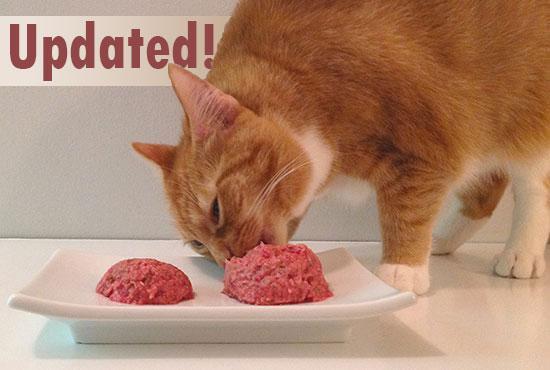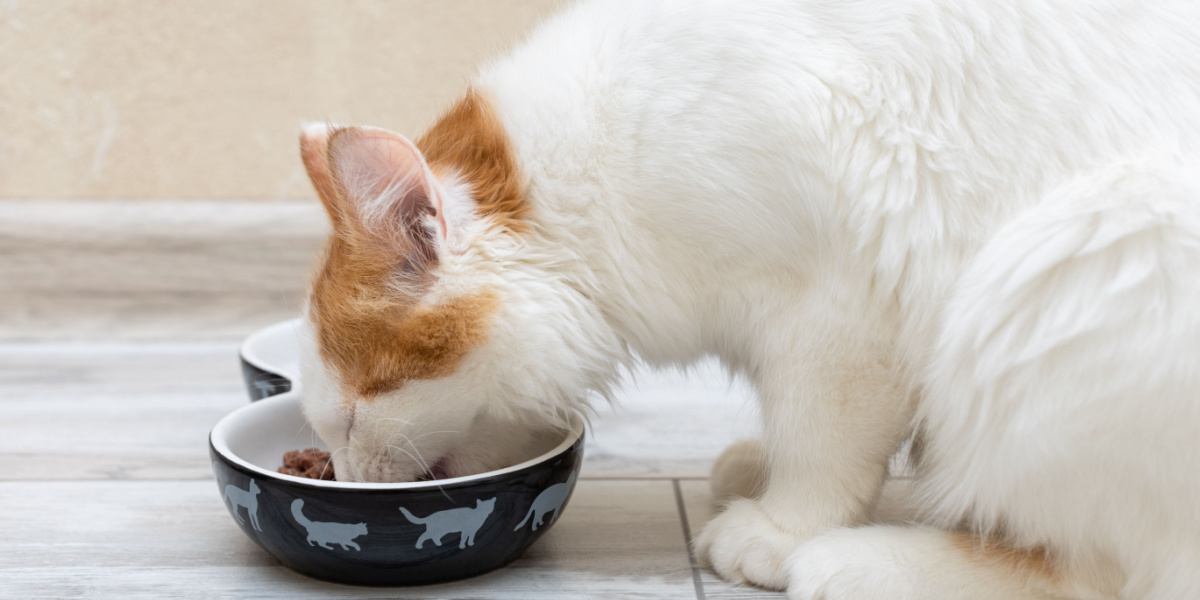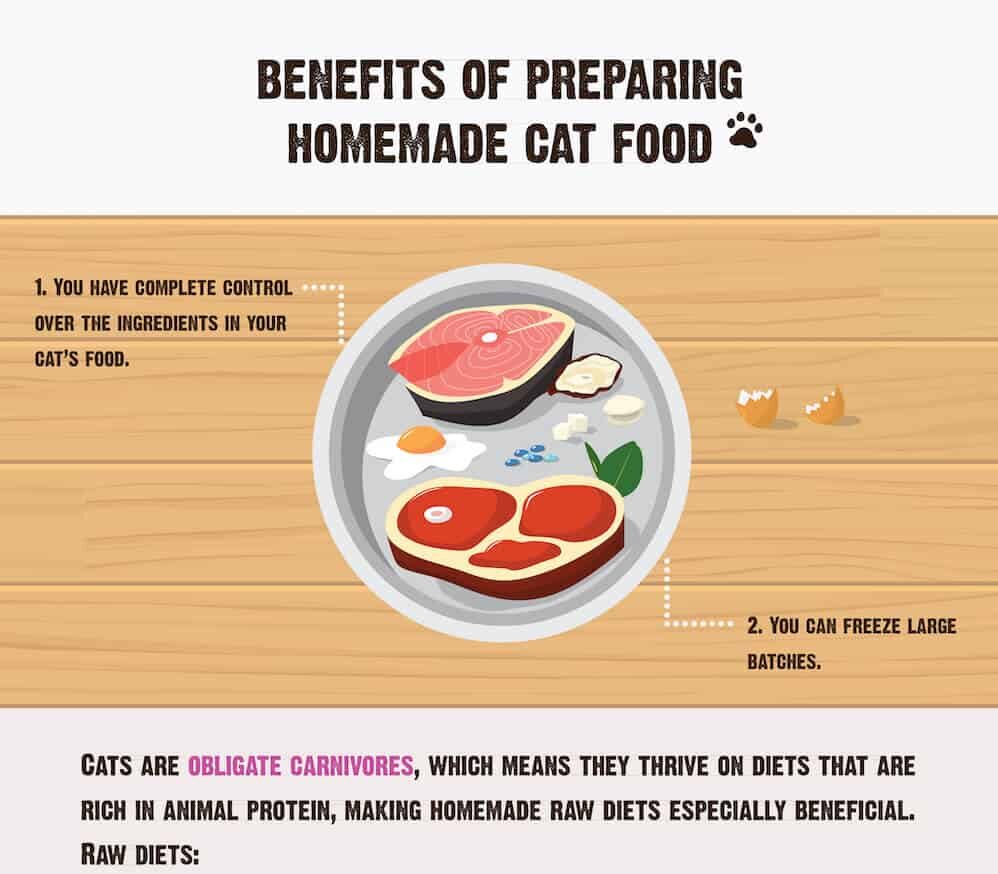Making your own cat food can be simple and nutritious. Start by combining protein, vegetables, and essential nutrients in the right proportions.
Creating homemade cat food allows you to tailor the ingredients to your cat’s specific dietary needs. It can be a cost-effective way to ensure your feline friend receives high-quality nutrition. By following a few basic guidelines and consulting with your veterinarian, you can provide your cat with a healthy and balanced diet.
We will discuss the steps to make your own cat food at home, covering essential ingredients, preparation methods, and safety considerations.

Credit: hare-today.com
Understanding Your Cat’s Nutritional Needs
Cats have specific nutritional requirements crucial for their health and well-being. What your feline friend eats directly impacts its overall health. Understanding the essential nutrients and dietary requirements for cats is vital in making homemade cat food.
Essential Nutrients For Cats
Essential nutrients such as proteins, fats, vitamins, and minerals are indispensable for feline health.
- Proteins: Vital for muscle development and overall growth.
- Fats: Provide energy and aid in nutrient absorption.
- Vitamins: Essential for various bodily functions, including immune system support.
- Minerals: Play a key role in bone health, fluid balance, and enzyme function.
Common Dietary Requirements For Cats
Cats need a balanced diet that includes proteins, fats, vitamins, and minerals in appropriate proportions.
- High-quality Protein: Main component of a cat’s diet for healthy muscle function.
- Adequate Fats: Source of energy and crucial for healthy skin and coat.
- Vitamins and Minerals: Necessary for overall health, growth, and disease prevention.
- Water: Vital for hydration and proper bodily functions.
Homemade Cat Food Recipes
Providing your feline friends with homemade cat food can be a healthier alternative to store-bought options. Here are some simple and nutritious homemade cat food recipes to try out:
Raw Food Diet Recipe
Cooked Food Diet Recipe
Vegetarian Cat Food Recipe
Supplements And Additions
Crafting homemade cat food allows you to control the ingredients, ensuring your feline gets the nutrients they need. Supplements and additions like taurine and Omega-3 fatty acids can enhance the health benefits of your cat’s diet, supporting their overall well-being.
Creating a balanced and wholesome meal for your furry companion is a rewarding way to prioritize their nutrition.
Adding Essential Vitamins And Minerals\
It is crucial to ensure your cat’s homemade food is nutrient-rich. Include a variety of essential vitamins and minerals like vitamin D and calcium. Consider supplements for any nutrients that may be lacking in the homemade food. \
Incorporating Probiotics And Omega Fatty Acids\
Probiotics can improve your cat’s digestive health and overall well-being. Omega fatty acids, like omega-3 and omega-6, are essential for your cat’s skin and coat health. Consider adding probiotic supplements and oily fish for omega fatty acids to your cat’s diet.

Credit: cats.com
Feeding Guidelines And Tips
Discover simple and effective feeding guidelines and tips for creating homemade cat food. Learn how to prepare nutritious meals to ensure your feline friend’s health and well-being. With these valuable insights, you can craft wholesome food that meets your cat’s dietary needs.
Transitioning Your Cat To Homemade Food
When transitioning your cat to homemade food, it’s essential to do so gradually. Abrupt changes in diet can upset your cat’s digestive system. Start by mixing a small amount of homemade food with your cat’s regular diet, increasing the proportion of homemade food over several days until it becomes the sole source of nutrition.
Portion Control And Feeding Frequency
Proper portion control is crucial to maintain your cat’s health. Consult your veterinarian to determine the appropriate portion size based on your cat’s weight, age, and activity level. Generally, an adult cat needs about 20 calories per pound of body weight. Feeding frequency also plays a role – smaller, more frequent meals are often preferred by cats.
Potential Pitfalls And Risks
Discover the potential pitfalls and risks associated with making your own cat food. Find out how to navigate these challenges and ensure your feline friend’s diet is healthy and balanced.
Avoiding Common Mistakes
When making your own cat food, it’s important to be aware of potential pitfalls and risks to ensure the health and wellbeing of your furry friend. By understanding and avoiding common mistakes, you can create a balanced and nutritious meal that meets your cat’s dietary needs.
Here are some key points to keep in mind:
- Recipe Balance: One of the most common mistakes is an unbalanced recipe lacking essential nutrients. Make sure to include a variety of protein sources, such as meat, fish, and poultry, to provide the amino acids cats require.
- Calcium and Phosphorus Levels: Maintaining the correct ratio of calcium to phosphorus is crucial for your cat’s bone health. However, it’s important to note that excess calcium can lead to urinary tract issues, so it’s crucial to strike the right balance.
- Vitamin and Mineral Supplementation: Creating a homemade cat food diet requires careful consideration of necessary vitamins and minerals. Ensure you are meeting your cat’s requirements through proper supplementation or by including ingredients rich in these nutrients.
- Safe Food Handling: Just like with human food, safe food handling practices are essential when making cat food. Avoid cross-contamination, refrigerate or freeze leftovers promptly, and always wash your hands and food preparation surfaces thoroughly.
- Quality Ingredients: Be mindful of the ingredients you use for your cat’s food. Opt for fresh, high-quality meat and vegetables, and avoid items that may be harmful, such as onions, garlic, and certain spices.
Understanding Allergies And Sensitivities
Cats, like humans, can develop allergies and sensitivities to particular foods. It’s crucial to be aware of any potential allergens and take steps to avoid them when making homemade cat food.
Here are some key considerations:
- Common Allergens: While each cat is unique, some common food allergens for felines include grains, dairy products, fish, and certain meats. Monitor your cat for any adverse reactions when introducing new ingredients.
- Elimination Diets: If you suspect your cat has a food allergy or sensitivity, you may need to take a systematic approach to identify the trigger. An elimination diet involves removing potential allergens and gradually reintroducing them to pinpoint the culprit.
- Consulting a Vet: If you’re uncertain about your cat’s dietary needs or suspect food allergies, consult a veterinarian. They can provide guidance, conduct allergy tests, and recommend suitable alternatives to ensure your cat’s health and wellbeing.
Making your own cat food can be a rewarding endeavor, but it’s vital to be aware of the potential pitfalls and risks involved. By avoiding common mistakes and understanding allergies and sensitivities, you can provide your furry friend with a wholesome and balanced diet tailored to their specific needs.
Consulting With A Veterinarian
Consulting with a veterinarian is crucial when considering making your own cat food. They can provide necessary guidance and ensure the diet meets all nutritional requirements.
Importance Of Professional Guidance
When it comes to making your own cat food, consulting with a veterinarian is of utmost importance. Your furry friend’s health and well-being rely on a balanced and nutritious diet, and the guidance of a professional can ensure that your homemade cat food meets all the necessary requirements.
Customizing Recipes For Your Cat’s Unique Needs
Every cat is unique, with different dietary needs and preferences. Consulting with a veterinarian will allow you to customize recipes specifically tailored to your cat’s individual requirements. From the protein sources to the portion sizes, a professional can provide invaluable insights to optimize your cat’s nutrition.
Transitioning To Homemade Cat Food Safely
Transitioning your cat from commercial to homemade food should be done gradually and with caution. A veterinarian can guide you through the process, ensuring a smooth transition while minimizing any potential digestive issues or nutrient deficiencies.
Balancing Essential Nutrients
Creating a well-balanced homemade cat food requires careful consideration of essential nutrients. Your veterinarian can help you identify and include the right amount of proteins, fats, carbohydrates, vitamins, and minerals in your cat’s diet to support their overall health and prevent any deficiencies.
Identifying Food Allergies And Sensitivities
Cats, like humans, can develop food allergies or sensitivities. Working closely with a veterinarian will help you identify any adverse reactions your cat may have to certain ingredients, allowing you to modify recipes accordingly. This way, you can ensure that your cat’s homemade food not only meets their dietary needs but also avoids potential allergic reactions.
Conclusion And Final Thoughts
As we conclude our guide on making your own cat food, it’s important to reflect on the rewarding journey you’ve embarked on for the well-being of your feline companion.
Enjoying The Bonding Experience
Preparing homemade food for your cat is not only about meeting its dietary needs but also about strengthening the bond you share. Engage with your pet in the kitchen and cherish these moments together.
The Reward Of Providing Tailored Nutrition
By creating customized meals, you can cater to your cat’s specific requirements and preferences. This tailored nutrition ensures optimal health and happiness for your beloved pet.

Credit: purelivingforlife.com
Frequently Asked Questions For How To Make Your Own Cat Food
Can Cats Eat Homemade Cat Food?
Yes, cats can eat homemade cat food that is balanced and provides all the necessary nutrients. It is important to consult with a veterinarian to ensure the homemade cat food recipe meets all the nutritional requirements for your cat’s specific needs.
What Are The Benefits Of Making Your Own Cat Food?
Making your own cat food allows you to have control over the ingredients, ensuring that your cat is getting high-quality and safe food. It can also be cost-effective in the long run and provide a variety of flavors for your cat’s enjoyment.
What Ingredients Should I Avoid When Making Homemade Cat Food?
When making homemade cat food, it is important to avoid ingredients that are toxic to cats, such as onions, garlic, grapes, raisins, chocolate, and certain artificial sweeteners like xylitol. Also, consult with a veterinarian to ensure you are not missing any essential nutrients in your homemade cat food recipe.
How Do I Ensure My Homemade Cat Food Is Nutritionally Balanced?
To ensure your homemade cat food is nutritionally balanced, it is recommended to consult with a veterinary nutritionist or a veterinarian experienced in feline nutrition. They can help you create a recipe that includes the right proportions of protein, fat, carbohydrates, vitamins, and minerals for your cat’s specific needs.
Conclusion
Making your own cat food can be a rewarding and healthy choice for your feline friend. With the right ingredients and a bit of effort, you can provide a balanced and nutritious diet that meets your cat’s specific needs. By taking the time to prepare homemade cat food, you can ensure that your pet is getting the best possible nutrition.
With some planning and the right resources, you can create delicious and healthy meals that will keep your cat happy and healthy for years to come.
